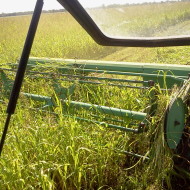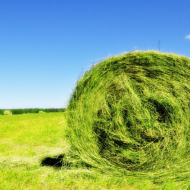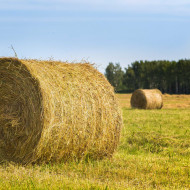What is the value of Sudanese grass and the technology of its cultivation
Content
Biological features of Sudanese grass
The plant is a species of sorghum. A solid root system, consisting of many adventitious roots, is capable of deepening into the ground to a depth of 2.5 m and expanding 75 cm in breadth. The stem is smooth, cylindrical, filled with white porous parenchyma. In addition to tall, there are also more compact varieties of culture up to 1 m in height, with bushiness ranging from 12 to 25 shoots.

There are plants with bushes of various shapes:
- stretched up;
- completely recumbent and semi-recumbent.
- strongly or slightly spreading.
The most popular is the variety with slightly spreading bushes extended upwards. Mowing such crops is easier and faster. In tropical countries, the Sudanese reaches up to 7 m, while in Russia more compact varieties are common.
Let's list the main advantages of the Sudanese herb:
- The ability to grow on saline soils. This makes it possible to plant crops even on salt marshes, unsuitable for other plants.
- Strong roots firmly hold together the soil that has undergone severe erosion, the grass reduces the processes of leaching and weathering.
- Weed control.
- Increase of moisture and air permeability of the soil due to loosening.
The soil loosened by the planted culture allows air to pass through better, creating a favorable environment for the multiplication of microbes, bacteria and worms. All this activates the processing of humus. As a result, the Sudanese woman herself is less likely to get sick, and the yield is growing.
However, the culture also has certain disadvantages. In particular, Sudanese grass significantly impoverishes the soil, extracting useful components from it.Most often, Sudanese is planted as a forage crop for green mass and hay.

Nutritional properties
Sudanese cattle are fed in the form of hay and greens. The green mass contains:
- 3% protein;
- 4.5% protein;
- 8-9% sugars.
The nutritional properties of hay are due to the mowing time:
- during the seasoning period, it is possible to obtain a product containing 15–16% of crude protein;
- during the booting period, the protein level reaches 14–19%.
It is advisable to mow the Sudanka on silage at the stage of full grain. The nutritional properties of silage are not inferior to corn.
Experts recommend combining the planting of Sudanese sorghum with legumes - alfalfa, etc. As a result, a nutritional composition rich in calcium, protein, and rapidly dissolving organic components is obtained.
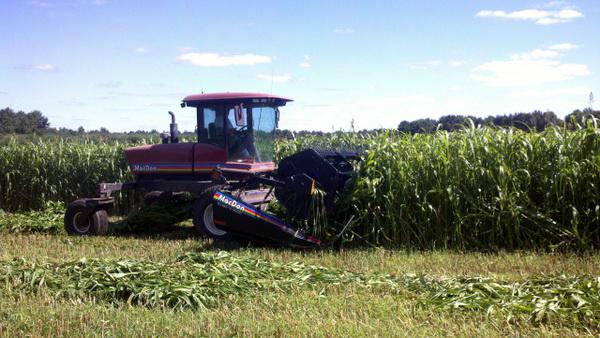
Feed value
When comparing Sudanese as food with other grains, its value becomes noticeable. Culture contains much more:
- proteins (by 10% or more);
- proteins (by 5% or more, second only to legumes);
- carbohydrates (60–70%);
- Sahara;
- carotene;
- fiber.
Sudanese grass contains many essential macro- and microelements:
- iron and magnesium;
- molybdenum and potassium;
- phosphorus and copper;
- zinc and manganese;
- selenium and calcium.
The presence of vitamins A, B1, B2, B5, B6, H, PP in Sudanese has a positive effect on the health and well-being of farm animals.
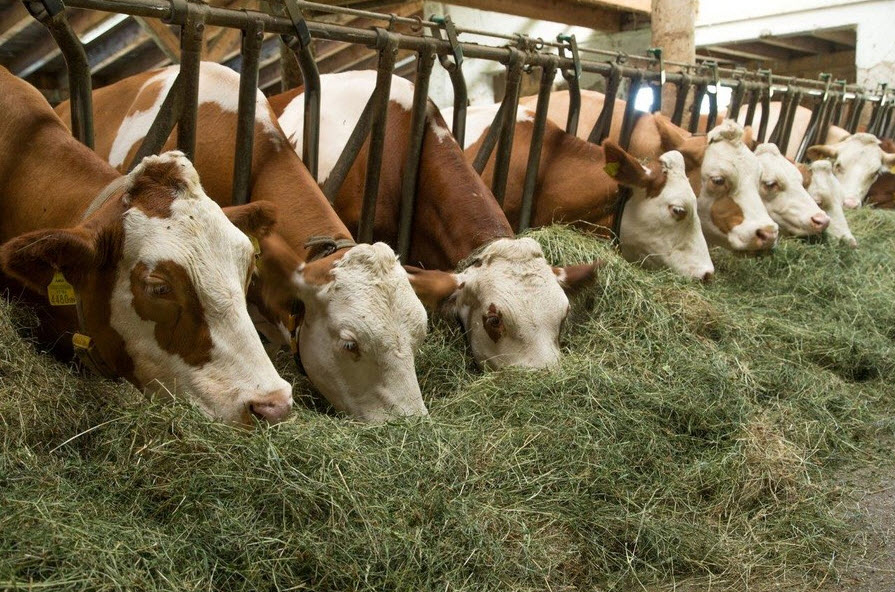
Video "Why do we need Sudanese grass"
This video tells about the peculiarities of planting and growing Sudanese.
Common agricultural varieties
Although breeding studies of Sudanese grass are still underway, few new hybrids have been developed based on it. The lack of interest is explained by the lack of demand for the plant in comparison with other cereals of the genus Blueberry. Here is a brief description of the varieties used in our country:
- Brodskaya 2. Graduated from the All-Russian Institute of Beef Breeding (Brody). The bush forms up to 7 leaves, reaching 60 cm in height and 4 cm in width. A paniculate brush of an elongated upward shape, a spreading, spreading plant, becomes a little narrower at the time of ripening. Panicle length reaches 30 cm. The average bush contains 35 branches. The weight of 1000 seeds varies from 10 to 12 g. The variety is resistant to plant diseases of this species.
- Jubilee 20. The selection was carried out on the basis of the production association "Saratovskoe". Medium bushiness. The umbrella is spreading. Seeds in a transparent shell. The hybrid is early maturing, the first mowing can be done already on the 35th day after germination. Average endurance.
- Chishminskaya early. Received from the Bashkir Agricultural Institute. The stem is thin, stretches up to 1 m. Early maturing, 40 days after emergence, the grass can be mowed. Disease resistance is average.
The yield and nutritional qualities of all three varieties are high.
Sudanese grass cultivation technology
It is better for planting to choose areas on which they previously grew:
- vegetables (cabbage, potatoes);
- peas;
- corn;
- winter cereals;
- pelushka, vetch, alfalfa.
The soil must be cleared of weeds.
A good yield of seeds is obtained in plots that have been fallow.
It is advisable to process the site in the autumn months so that the soil is saturated with moisture from rains and early snow. In the forest-steppe of Western Siberia, a field is plowed to a depth of 25 cm in the fall; in the spring, tooth harrowing is carried out in two passes to retain moisture. It is also recommended to level and pack the field with planners before and after planting in order to achieve simultaneous emergence.
The first and second mowing should be done as early as possible, allowing the green mass to build up for the next 2-3 mows. It is better to collect hay with mower-conditioners. Flattened stems wither better, dry faster.
Temperature and lighting requirements
Sowing should be done in the spring, when the ground warms up to 10-12 ° C above zero. Sorghum loves warmth; seeds break through at 12-13 ° C. Seedlings are very susceptible to low temperatures, die at -2 ° C, but grow easily at 30-35 ° C, normally withstanding the heat of 40 ° C.
Soil and Nutrition Requirements
Sudanese grass is undemanding to soils, heavy and light soils are suitable. Exceptions are swampy and acidified soils. The salinity level can reach 0.6–0.8%. It grows slowly during the growing season; protection from weeds is required.
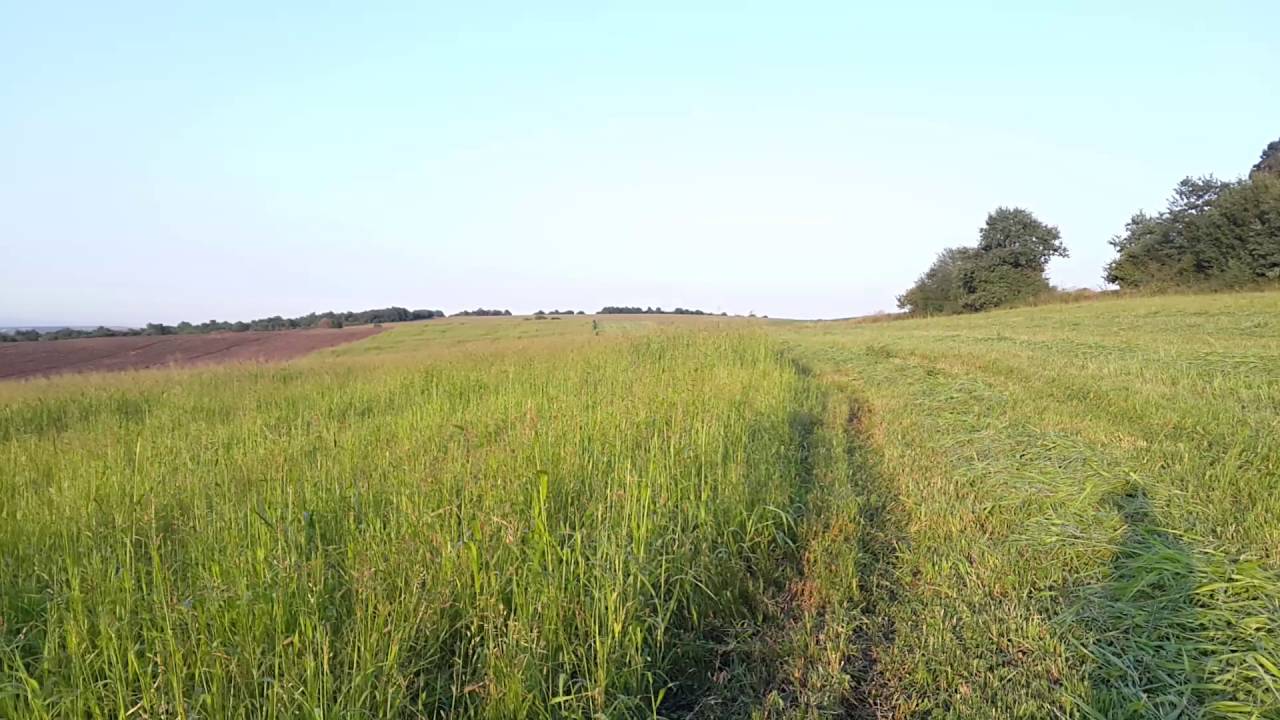
When planting on seeds, wide-row crops are used, for hay, they are planted. The standard depth of seed placement is 3-4 cm, but on light soils, the seed is deepened to 6-8 cm. The row spacing varies in the range of 45-50 cm.
Productivity is increased by timely fertilization. Recommended rates per hectare:
- 25 kg of potash fertilizers;
- 40 kg phosphoric;
- 40 kg nitrogen.
Moisture requirements
The culture is unpretentious, capable of independently extracting all the necessary nutrients and moisture from the depths of the earth thanks to its powerful and deep roots. However, yields can be easily increased through periodic irrigation. Sudanese woman absorbs rain moisture well in late summer and early autumn.
Depending on the saturation of the soil with moisture, suitable seeding rates are selected.

Seed preparation and seeding rates
The better the pre-sowing preparation of the seeds is, the better the seedlings will sprout. It is advisable to alternate etching with air-thermal heating; treatment with micronutrient fertilizers is recommended. Thanks to such procedures, the seeds germinate at the same time, being saturated with microelements. Fertilizer consumption is insignificant.
Prepare the solution as follows: dissolve 15 g of potassium permanganate and 8 g of boron or zinc salts in 2 liters of water. This concentration is sufficient to process a centner of Movra. During the procedure, the seeds are thoroughly and repeatedly mixed. Planted dry.
Vernalization has a positive effect on the result. A centner of Movra is poured into a container with 20 liters of water. When the seeds are saturated with water, they are removed and collected in small piles, leaving so for 8 days (store in the dark at room temperature). To avoid rotting, the piles are periodically stirred up. It is important to monitor the germination rate. If the seeds hatch too early, the piles are raked. Vernalization is especially useful for seed planting.

Here are the stages of pre-sowing preparation:
- Peeling.
- Deep plowing.
- Harrowing in early spring.
- Double cultivation before sowing.
- Pre-sowing soil consolidation.
- Post-sowing packing.
In dry steppes, when sowing, they adhere to measures of 10-14 kg per hectare, on forest-steppe lands with abundant rains, this figure is brought to 25-30 kg per hectare. However, if Sudanese grass is planted at the same time as other crops, the measure is reduced by 15–25%.
Crop care
Immediately after sowing, the field is rolled with ring-spur rollers. After another 3-4 days, with the appearance of a white thread of weeds, pre-emergence harrowing is performed. Further, when 3-4 leaves hatch on the stems, the sowing is harrowed again.
With wide-row planting, 1-2 inter-row loosening is performed. At the stage of 3-4 leaves, if the sowing is too clogged, they are treated with herbicides:
- Agritox (1–1.5 kg per 1 ha);
- "2.4 D" (0.5-1 kg per 1 ha);
- "2M-4X" (0.5-1 kg per 1 ha).
Harvesting and storage of crops
Sudanese sorghum is resistant to shedding, and yet harvesting must be done as soon as possible so that grain moisture does not increase and additional drying is not required. When planting on silage, harvesting begins during the wax ripening period.
Harvested by mowing with headers into rolls, then allowed to dry and threshed with grain harvesters.
Drying and storage is carried out in the same manner as for other grain crops. The only difference is that a weaker air flow is required during drying.
- Mowing with reapers
- Collection in rolls
- Drying herbs
Methods of protection against diseases and pests
The fight against ailments affecting the Sudanese woman and harmful insects involves the use of special fungicides and insecticides. The main diseases of culture are:
- different types of smut;
- ascochitis;
- cercosporosis;
- helminthosporiosis (brown spot);
- nigrosporosis;
- red bacterial spot.
Such pests are dangerous for Sudanese as:
- aphid;
- scoops;
- wireworm and false wire;
- corn moth.
Sudanese sorghum has proven itself well in agriculture in most regions of the Russian Federation. The minimum cost of agricultural technology will allow you to achieve a high yield, which makes growing crops economically profitable.

